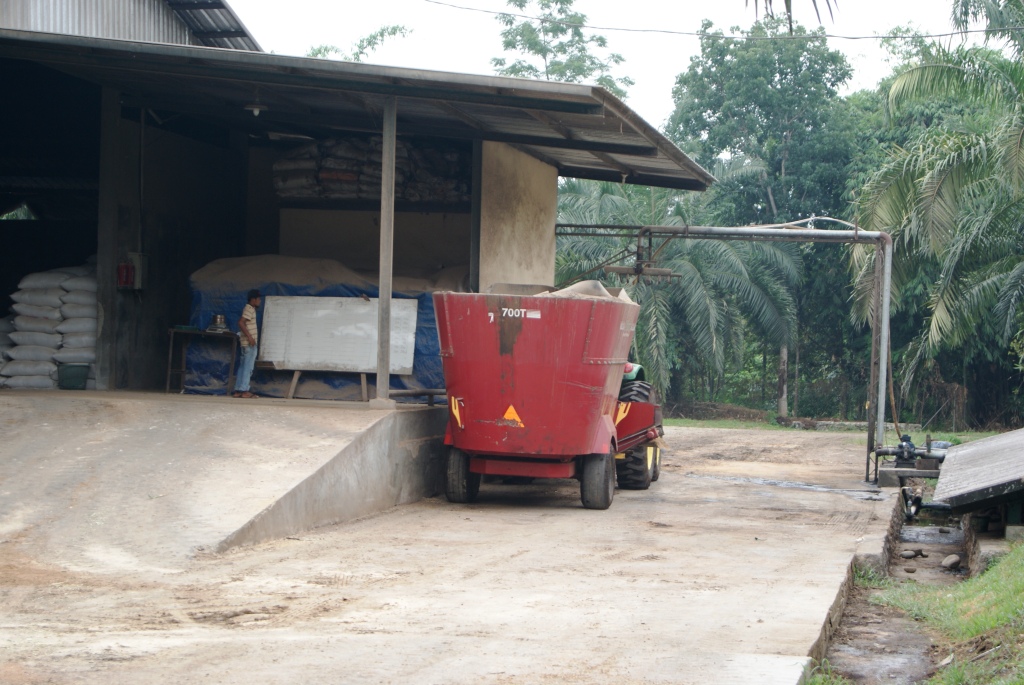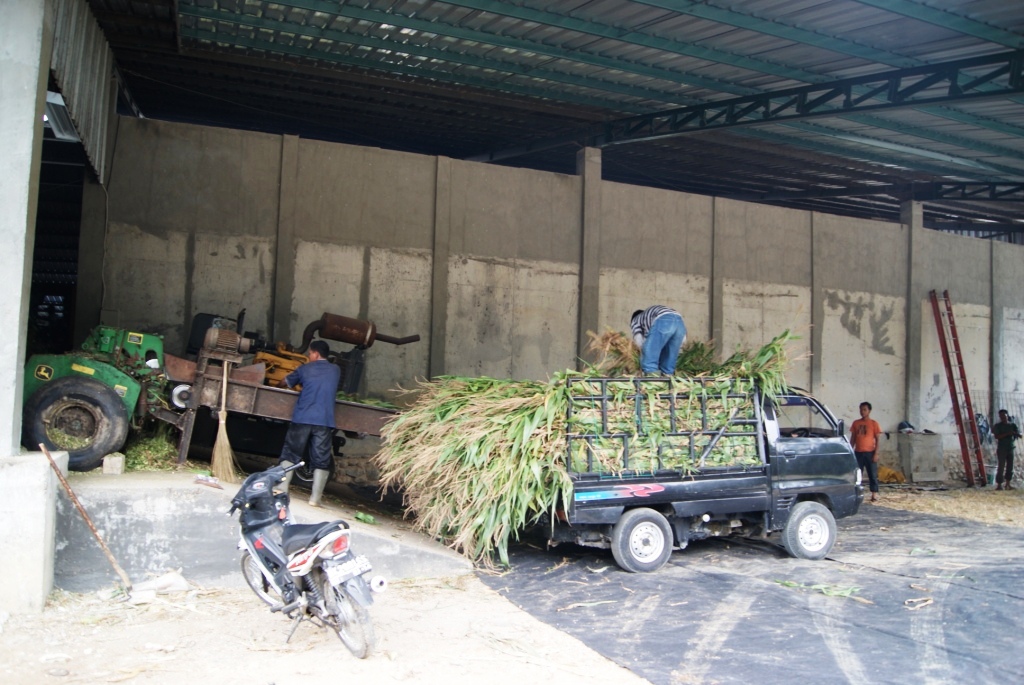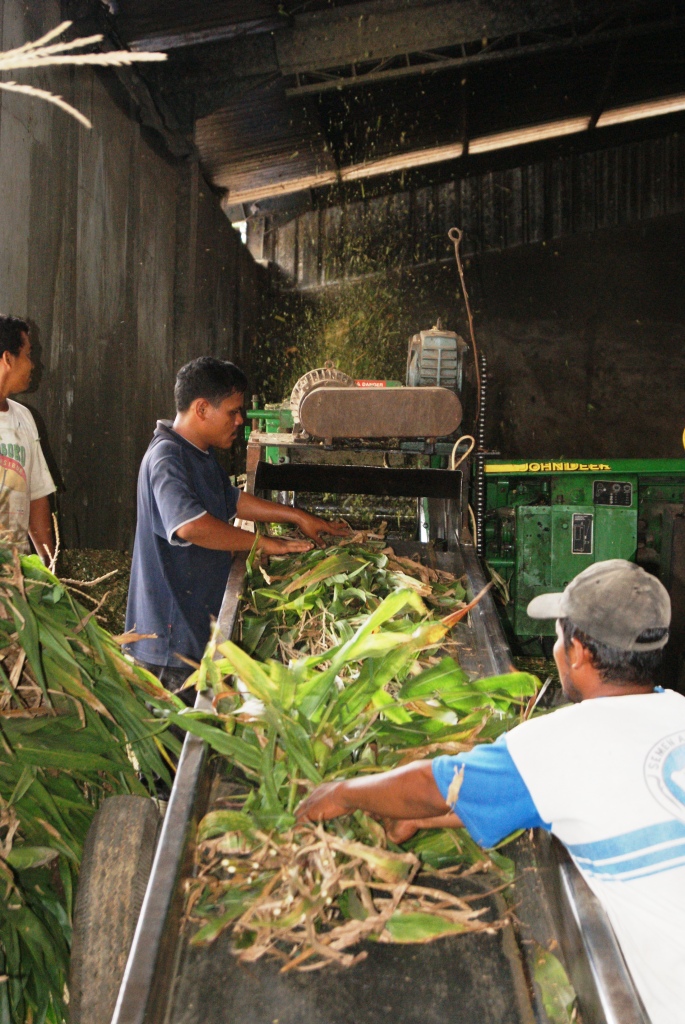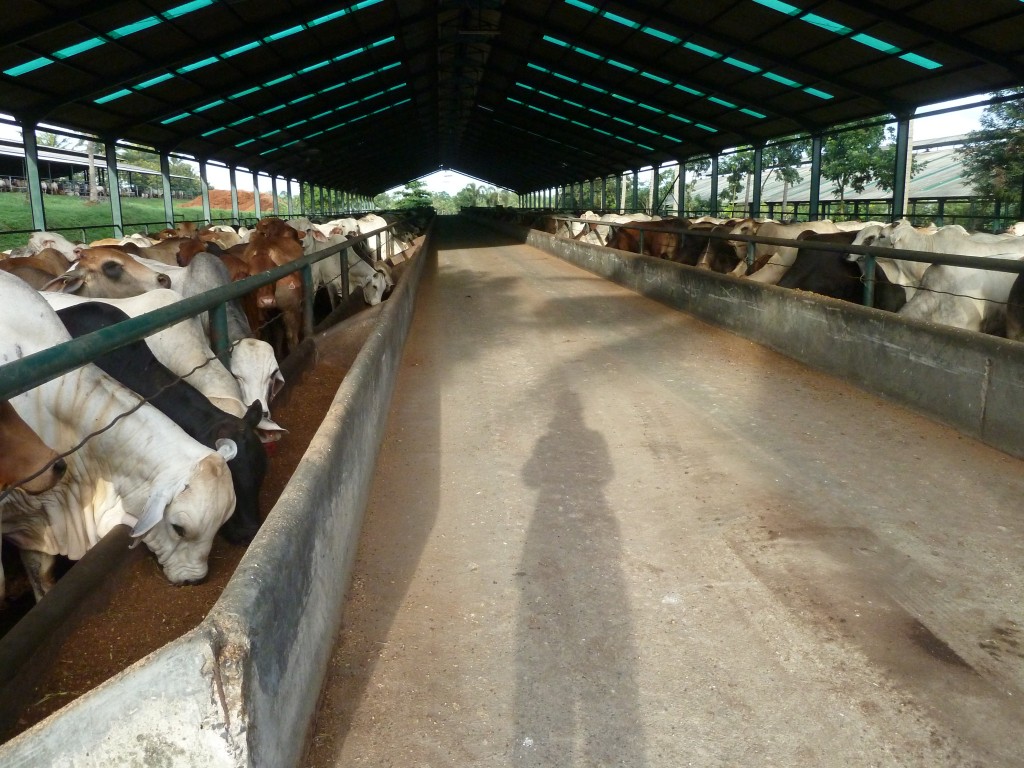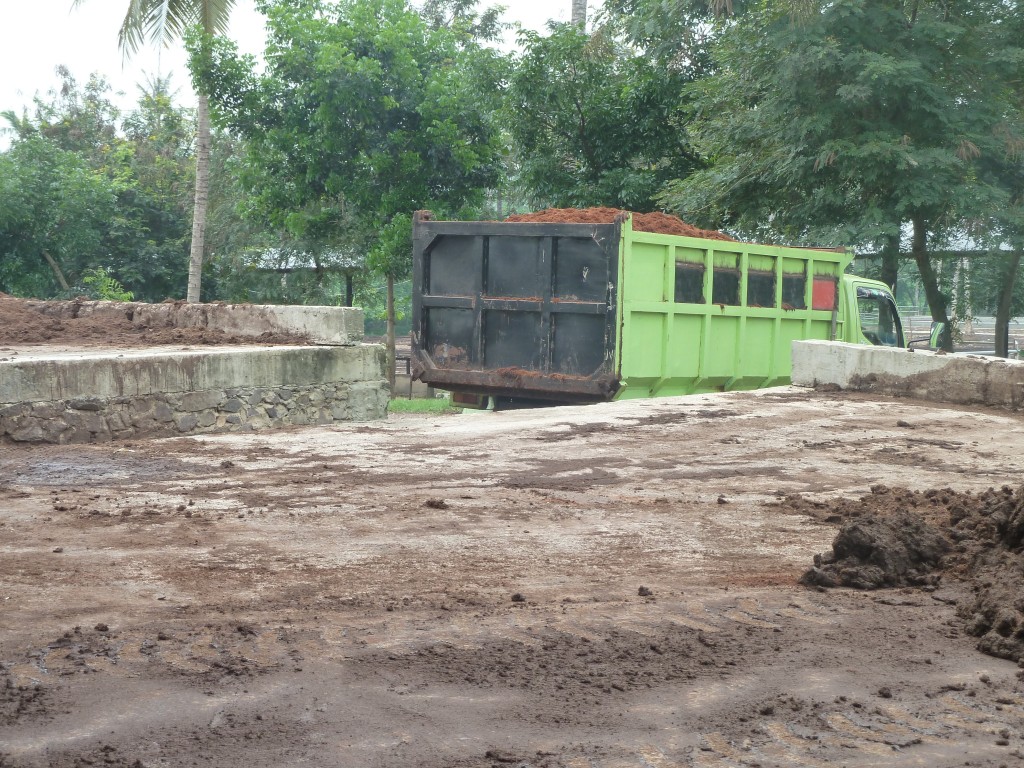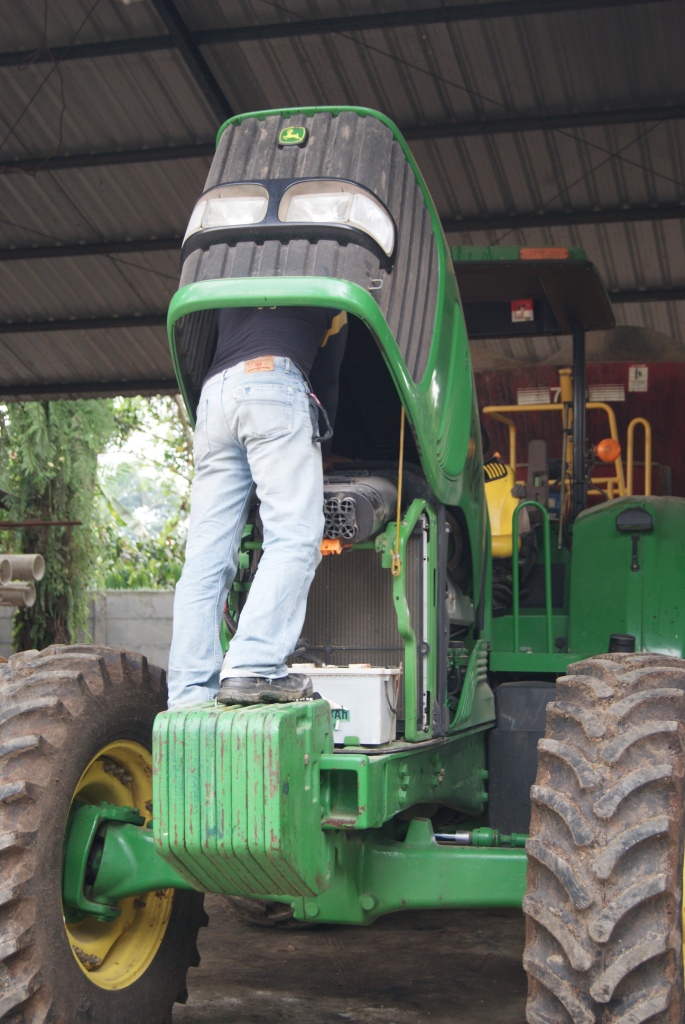Take a tour of an Indonesian feedlot
Host: Lisa Wood/ AGP Indonesia
Written by Lisa Wood – Traceability Officer, AGP.
I realise I may have jumped the gun a bit with introducing Dr. Neny, yet she is such an important part of our operations I felt she deserved to come in before the normal, daily operations of the feedlot.
Today I will explain the shipment induction process, and then describe more about general day to day activities at the feedlot.
Let’s return to our shipment of cattle that have just arrived and are having a rest. They are given a couple of days before we start handling them. On the third or fourth day though, they need to be taken into the yards so they can be weighed, vaccinated and have their visual ear tags placed.
The new shipment cattle are bought to the crush area, pen by pen. They walk through the crush one by one to have their RFID tag read, visual tag placed – both numbers are recorded; their weight taken, this is recorded against their ID numbers and given a vaccination, which is also recorded against their ID number. Then they walk out to the yard to wait for the rest of their pen mates to go through the same process, at which point they are walked back to their home pen.
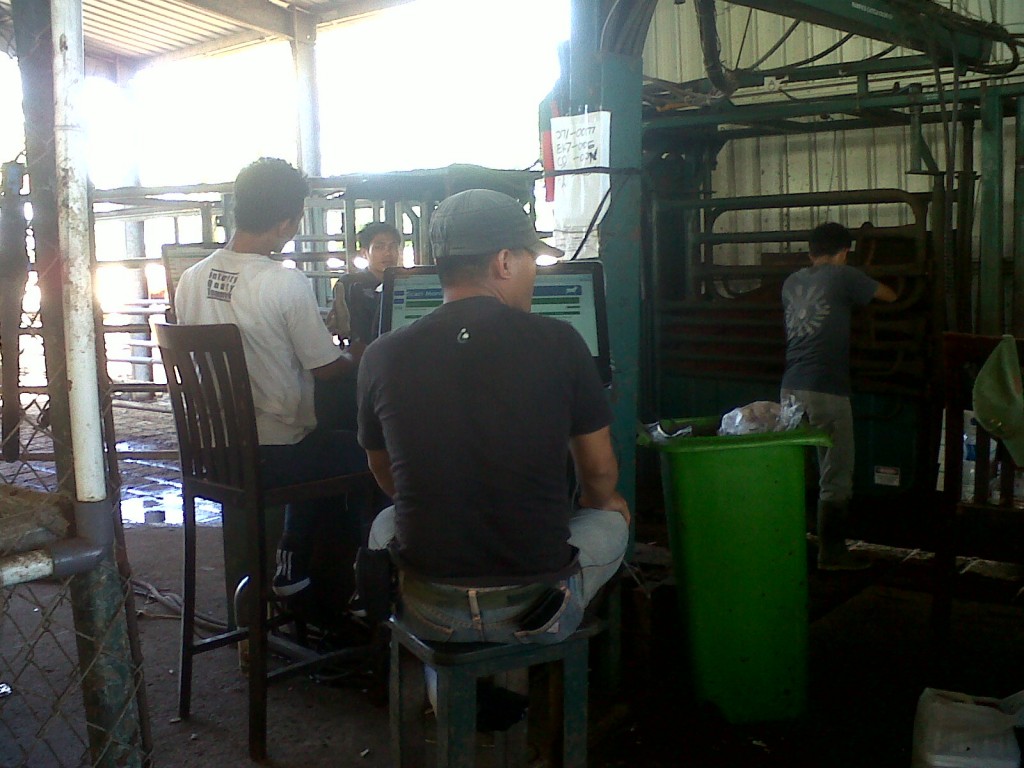 One person at the head to place the visual tag; one at the tail to give the injection and two at computers to record the data.
One person at the head to place the visual tag; one at the tail to give the injection and two at computers to record the data.
For those that don’t know, a cattle crush is a hydraulically driven piece of equipment that has a front door, with an opening so the cows head can stick through, a back door, so the cow cannot back out, and the ability for the sides to come in to hold the cow in place. This is necessary for both worker and cow safety.
The head needs to be accessible to place the visual tag. The cow needs to be held still when giving an injection, if the cow moves there is the possibility that the needle could break. Without identification, you cannot record treatments given to each specific head of cattle. It’s a bit like the immunisation cards we use for our children, and as cows don’t have pockets, the visual and RFID tags are the best method we have of ensuring no cow is over or under medicated.
“Why do they have two tags?” I hear you ask. Because sometimes one tag gets lost, occasionally they will both become lost. Two tags also give us a back up method of identification for traceability.
There are two additional behind the scenes teams here who deal with all this data. One group is data entry staff, the other is the IT Team. As we can have thousands of cattle on hand at any one time, it is vital that all data is kept up to date and records are kept of which head of cattle has had what treatments and when.
A couple of times a day, the cattle are fed. We use tractors. Other feedlots use manpower and lots of wheelbarrows.
There are huge feeding sheds that store all the ingredients we use to feed the cattle. Below are some corn stalks being chopped. Big trucks arrive loaded with produce, which is then stored in the feed shed. Then the smaller work utes bring a load to be chopped and mixed with the ration. This provides the cattle with a nutritionally balanced feed. When the feed has been mixed, the tractor drives around pouring its contents into the troughs.
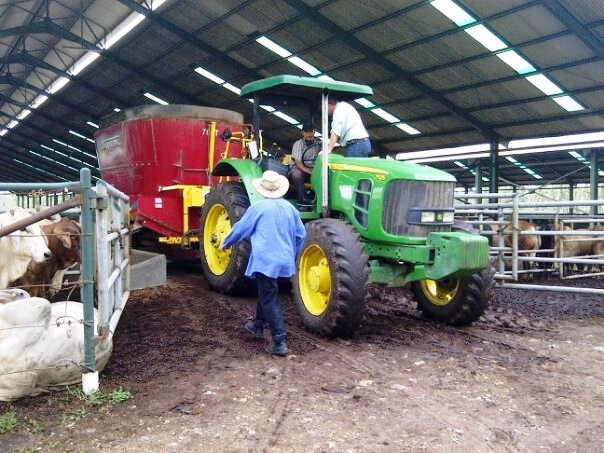 The tractor drives around and the wagon deposits the mixed feed rations into the troughs.
The tractor drives around and the wagon deposits the mixed feed rations into the troughs.
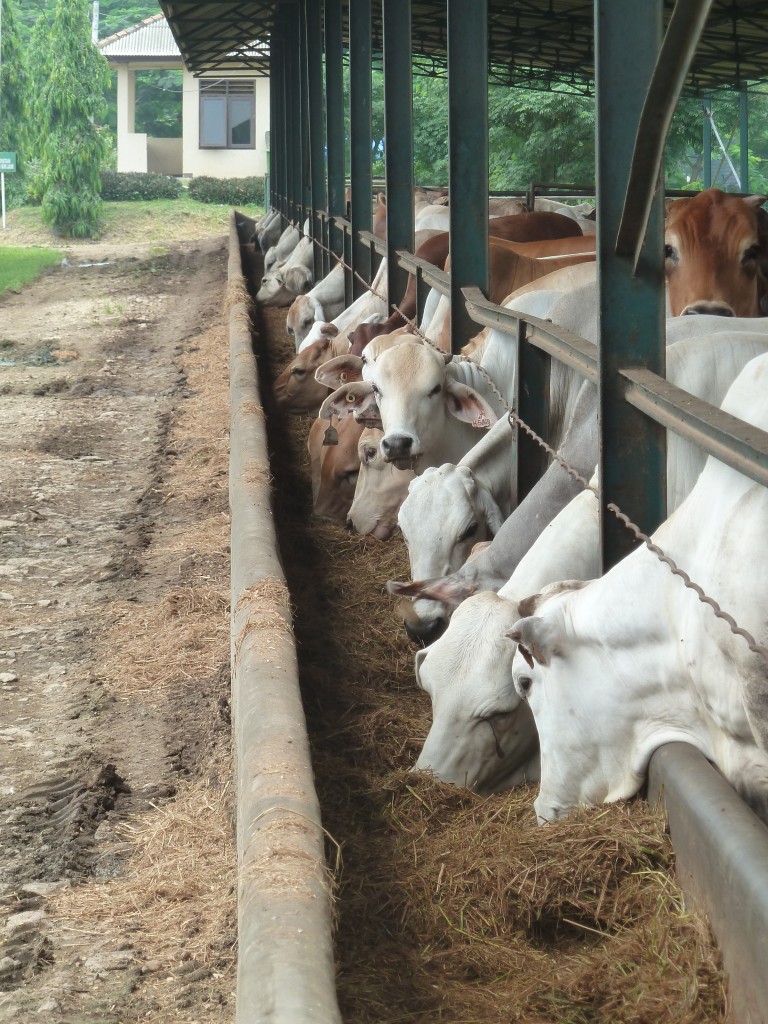 One side is the feed and at the back of the pen is the water trough. Food on one side, water on the other.
One side is the feed and at the back of the pen is the water trough. Food on one side, water on the other.
As with everything, when you put something in, you get something out. With cattle, that equates to a lot of manure. Every three or four days, the cattle are walked out of their pen and the dozers move in to clean up. Each shed has an area at the end where the manure is moved to in order to dry out for a few days. After that it goes to a different location to be converted into fertiliser.
When the pen has been cleaned, new bedding is bought in to cover the concrete floor. Then the cattle are brought back in. It is so funny watching the cattle as they come to the clean bedding. They sniff and snort at it and then start jumping around, kicking up their heels and playing games. After 30 minutes or so they calm down again, until the next pen cleaning occurs in a few days.
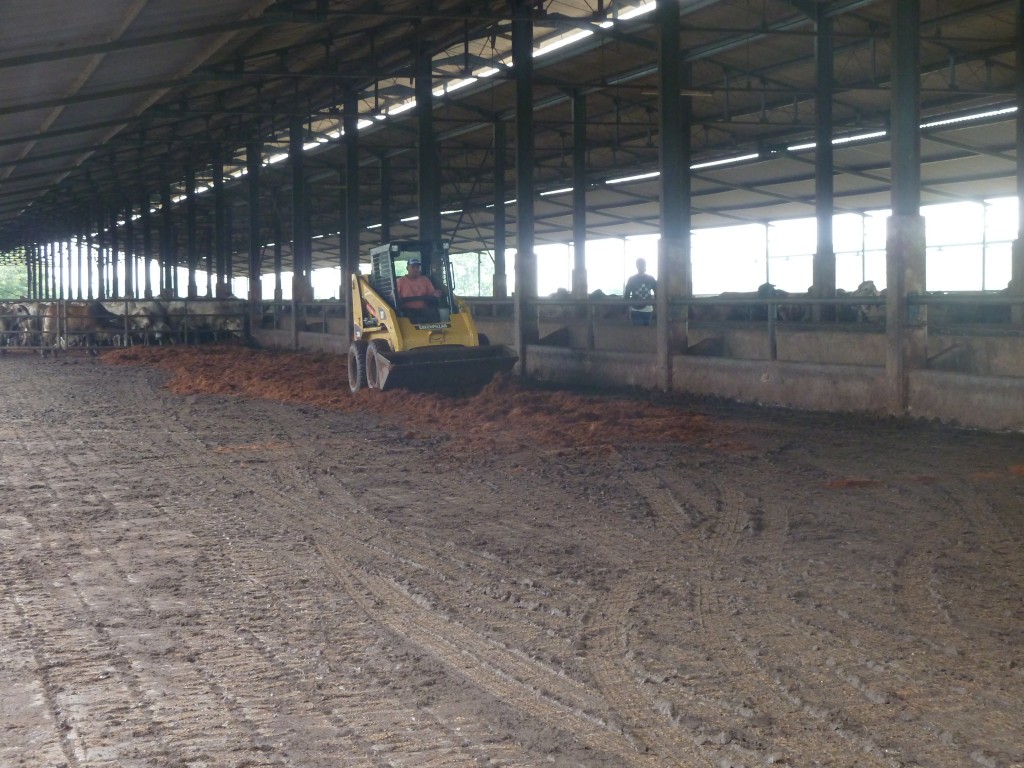 New bedding being trucked in and spread out.
New bedding being trucked in and spread out.
This is cattle life until they reach saleable weight and are sent to the abattoir. I will be going into this process on Sunday.
Now you have seen the some of the sheds and pens, we get to the other ‘behind the scenes’ group – the maintenance crew. This team is headed up by Tony, our engineer. He makes sure the tractors; dozers and anything else mechanical on the feedlot is serviced. He ensures any maintenance on pens, sheds, crushes and the dairy occurs. Then there are roads, dams and drainage systems to be thought of as well.
Pak Nyoman may identify the infrastructure that needs to be fixed, (or he’s been handed a report telling him) then Tony gets in there with his team and fixes it.
We have so many people directly employed by the feedlots; we also have many day farmers that come in to help with our crops. Indirectly we employ many others in the community, be they truck drivers delivering products or the nearby farmers who produce it, and then there are the other contractors, like the security staff.
Our feedlots provide an important source of employment in rural areas in a country that does not have the benefits of social security as Australia does. Here, if you don’t have a job, it essentially means that you don’t eat.
Tomorrow we spend a day at Way Laga, a very important project aimed at creating employment and slowly working toward growing the Indonesian beef cattle herd.

